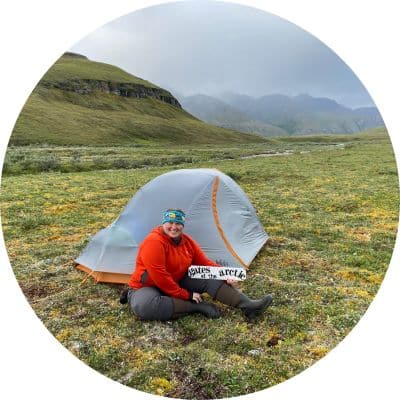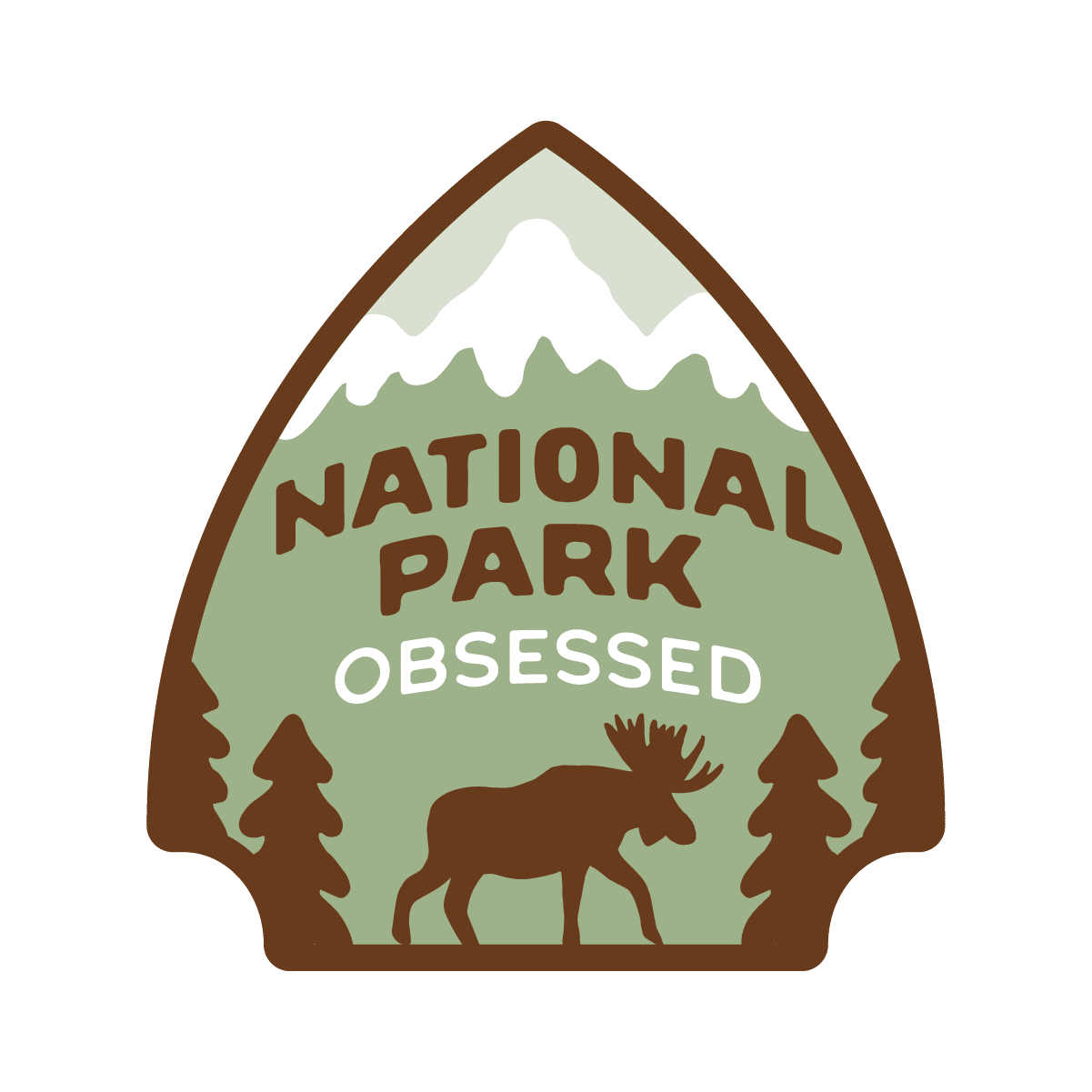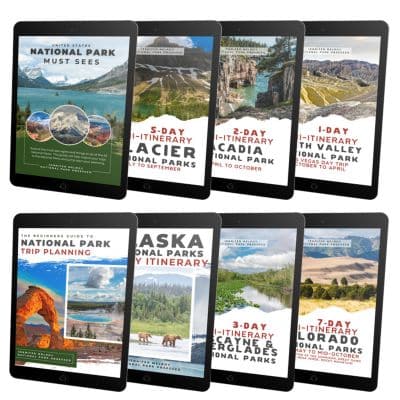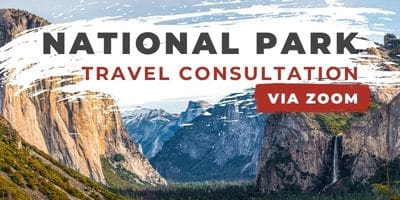15 National Parks with Surprising Military History
- Jennifer Melroy
- Last Modified May 26, 2025
- First Published on May 26, 2025
When you think of U.S. military history, you probably imagine battlefields, forts, or national cemeteries. But what if I told you that some of your favorite national parks, places known for their towering waterfalls, lava fields, or moonlike landscapes, also have hidden military connections?
Across the country, the National Park Service protects not only natural wonders but also the stories of American defense, conflict, and innovation. From parks once guarded by Buffalo Soldiers to Cold War missile sites hiding in plain sight, here are 15 national parks with a surprising military history.
Table of Contents
This post may contain affiliate links, meaning if you book or buy something through one of these links, I may earn a small commission at no extra cost to you! Read the full disclosure policy here.
NATIONAL PARK TRIP PLANNING RESOURCES
Here are some of the best resources to plan your national park travels. If you are new to the parks, National Park Travel Planning Bundle is the perfect resource to help you plan your dream trip, get it planned, and reduce the stress of planning your National Park trip.
- National Park Itineraries: Let someone else do the planning with our pre-planned National Park Itineraries for less than $6 a day.
- Get Free Entrance: The America the Beautiful National Park Pass is an $80 pass that is valid for 12 months. The pass provides free entrance to the National Parks and more than 2,000+ other federal lands.
- Make sure you have a National Park Passport: Here is my favorite National Park Passport.
- For Flights: Use Skyscanner to get the best prices on your flights.
- For Rental Vehicles: Browse for deals on rental cars at RentalCars.com. Or rent an RV or campervan with RVshare or Outdoorsy.
- For Hotels: I book my hotels on Hotels.com and Booking.com.
- For Vacation Rentals: I love VRBO for my vacation rentals.
- For Camping: If making camping reservations in the parks, I use Recreation.gov. For private campgrounds, I use Campspot.
- Buy Outdoor Gear: I get most of my outdoor gear at REI.
- Get Trail Maps on your phone with
- Looking for National Park Gift Ideas: Here are the 55+ Best National Park Gifts Ideas.
- Don’t forget travel insurance: I get my travel insurance through World Nomads.
Yellowstone National Park, Wyoming/Montana/Idaho
Long before the National Park Service was created in 1916, Yellowstone was protected by an unexpected force: the U.S. Army. From 1886 to 1918, soldiers from the 1st U.S. Cavalry were stationed at what became Fort Yellowstone, located in the Mammoth Hot Springs area. Their mission was to safeguard the park’s unique geothermal features, wildlife, and natural landscapes from vandalism, poaching, and overuse during a time when no federal agency existed to manage national parks.
Without enforcement, poachers hunted elk and bison for profit, vandals defaced geysers, and squatters set up camp in protected areas. The cavalry patrolled the park on horseback, removed illegal settlers, stopped poachers, and maintained trails and roads. Their actions helped set the standard for how future parks would be managed and protected.
These soldiers were more than law enforcers. They took on roles that resemble those of modern park rangers by educating visitors, maintaining order, and preserving the natural environment. Many of their original buildings, such as the guardhouse and officers’ quarters, still stand today in the Fort Yellowstone Historic District, offering a glimpse into this military chapter of the park’s history.
Yosemite National Park, California
Like Yellowstone, the responsibility of protecting Yosemite fell to the U.S. Army. From 1891 to 1914, troops from the 4th Cavalry Regiment were stationed in Yosemite National Park each summer to safeguard its natural wonders and ensure visitors followed early park regulations. The Army’s role was to prevent illegal grazing, timber cutting, and poaching, which was threatening the park’s ecosystems.
The soldiers operated out of Wawona, located near the park’s southern entrance. Each summer, they rode hundreds of miles on horseback to patrol the high country, protect wildlife, and remove livestock from meadows. Their presence made a clear difference in preserving the landscape, and their reports helped inform how future parks would be managed.
Some of the most notable protectors of Yosemite were the Buffalo Soldiers—African American troops from the 9th and 10th Cavalry. They served in Yosemite, as well as nearby Sequoia and Kings Canyon National Park, and were among the first park rangers in U.S. history. These soldiers not only patrolled the backcountry but also built trails, roads, and even the first museum in a national park.
Gateway National Recreation Area, New Jersey/New York
Gateway National Recreation Area may look like a peaceful coastal park today, but it was once a major part of America’s military defense. Spread across New York and New Jersey, the park includes several former military bases that were critical to protecting New York Harbor during the 20th century.
Fort Tilden, located in Queens, was built during World War I and later updated in World War II. It housed large coastal guns and, during the Cold War, was converted into a Nike missile site. These missiles were meant to shoot down enemy bombers heading for New York City.
Nearby Floyd Bennett Field was New York’s first municipal airport. In 1941, it became a Naval Air Station and trained military pilots during World War II. Today, you can still see the old hangars and runways that once launched military aircraft.
On the New Jersey side, Sandy Hook is home to Fort Hancock. This base guarded the entrance to New York Harbor from the late 1800s through the mid-1900s. Soldiers lived and trained there, and the site was once equipped with some of the most advanced weapons and radar systems of its time.
Gateway’s beaches and trails now attract hikers, bikers, and birdwatchers—but the bunkers, forts, and missile sites remain. They tell the story of a time when these shores were a front line in defending one of America’s biggest cities.
Golden Gate National Recreation Area, California
Golden Gate National Recreation Area protects more than stunning views of the San Francisco Bay. It also preserves over 100 years of U.S. military history. The park is home to a large concentration of former military forts, bunkers, and missile sites that once guarded the West Coast from enemy threats.
Fort Point, located beneath the Golden Gate Bridge, was built just before the Civil War to defend San Francisco Bay from naval attack. Although it never saw battle, it was a key part of the harbor’s coastal defense system. Its massive brick walls and cannon mounts still stand today.
Across the bay, Fort Baker and Fort Barry were built in the late 1800s and used well into the 20th century. These forts housed soldiers and coastal artillery that protected the entrance to the bay. During World War II, they were part of a large defense network watching for Japanese submarines and aircraft.
In the Cold War era, the area became home to Nike missile sites. One of the best-preserved is Nike Site SF-88 in the Marin Headlands. Visitors can still see the underground missile silos and radar systems that once stood ready to launch anti-aircraft missiles if the U.S. came under attack.
Everglades National Park
Everglades National Park is known for its wetlands and wildlife, but it also has a lesser-known military history. During World War II, the area was used for bombing practice and aerial training. The U.S. military took advantage of the park’s remote location to train pilots and test equipment without endangering nearby communities. Bombing targets were set up in the wetlands, and aircraft flew over the region from nearby Homestead Army Airfield.
After the war, the Everglades continued to play a role in national defense. During the Cold War, the United States built a Nike Hercules missile site inside what is now Everglades National Park. This site was part of a nationwide missile defense system designed to protect major cities from Soviet air attacks. Located in the southern section of the park, the site included radar towers, missile launch pads, and support buildings.
The Nike site remained active into the 1970s. It is one of the best-preserved examples of Cold War missile installations in the country. Today, visitors can take guided tours of the facility and learn how soldiers stationed there lived and worked during a time of high global tension.
Dry Tortugas National Park
Dry Tortugas National Park is home to Fort Jefferson, one of the largest brick masonry forts in the world. Located 70 miles west of Key West, the fort was built by the U.S. military in the mid-1800s to protect the Gulf of Mexico’s shipping lanes. Its remote location and natural deep-water harbor made it a strategic point for controlling access between the Gulf and the Atlantic Ocean.
Construction on Fort Jefferson began in 1846 but was never fully completed. Still, it served an important military purpose for decades. During the Civil War, Union forces occupied the fort to prevent it from falling into Confederate hands. It was also used as a military prison. The most famous prisoner held there was Dr. Samuel Mudd, who was convicted for aiding John Wilkes Booth after the assassination of President Abraham Lincoln.
Though the fort never saw combat, it remained a military outpost through the late 1800s. Its cannons were never fired in battle, but its presence helped deter enemy ships and protect American interests in the Caribbean and Gulf regions.
Craters of the Moon National Monument & Preserve
Craters of the Moon’s volcanic terrain played a surprising role in Cold War military and space training. During the 1950s and 60s, the U.S. military used the area to test how equipment and personnel would function in extreme, rugged environments. Its jagged lava flows and harsh landscape made it an ideal location for simulating battlefield conditions and nuclear fallout scenarios.
While no weapons were tested on-site, military teams studied how to navigate and operate in the rough terrain. This research supported both national defense planning and emergency response strategies during a time of high global tension.
In 1969, Craters of the Moon also became part of the U.S. space program. NASA sent Apollo astronauts to the park to study volcanic geology. The goal was to prepare them to identify similar features on the Moon. The astronauts trained by hiking through lava fields, collecting rock samples, and learning how to operate in an unfamiliar, unforgiving environment.
Cape Cod National Seashore, Massachusetts
Cape Cod National Seashore played an important military role during World War II. With its long coastline and position along key Atlantic shipping routes, Cape Cod was a critical part of the United States’ coastal defense system.
During the war, the U.S. military built installations across the Cape to monitor for enemy activity. German U-boats operated off the coast, sinking several Allied vessels. In response, the military established lookout towers, radar stations, and anti-aircraft batteries. Soldiers patrolled the beaches, scanning the ocean for signs of submarines or incoming attacks.
Camp Edwards, located nearby, became one of the largest military training bases in the country. Troops trained in amphibious operations, radio communications, and chemical warfare. The Otis Army Air Field (now part of Joint Base Cape Cod) supported these operations and conducted air patrols over the Atlantic.
Klondike Gold Rush National Historical Park, Alaska/Washington
Klondike Gold Rush National Historical Park preserves the story of a chaotic time when tens of thousands of gold seekers flooded into Alaska and the Yukon. In the late 1890s, the U.S. military played a key role in bringing order to the region and supporting American interests along the border with Canada.
As Skagway, Alaska, grew overnight into a booming and lawless frontier town, crime and conflict became common. To restore order, the U.S. Army established a presence in 1899. Soldiers helped enforce laws, settle disputes, and manage customs issues along the rugged trails to the goldfields.
The Army also played a role in maintaining border stability. At the time, the exact boundary between the U.S. and Canada was still disputed. Military officials helped assert U.S. control and supported diplomatic efforts that eventually settled the boundary in 1903.
Troops stationed in the area helped build infrastructure, including trails and telegraph lines, that supported both military operations and civilian use. Their work laid the groundwork for future development in southeastern Alaska.
Pecos National Historical Park, New Mexico
Pecos National Historical Park preserves the site of the Battle of Glorieta Pass, one of the most important Civil War battles fought in the western United States. Often called the “Gettysburg of the West,” this 1862 battle was a turning point that stopped the Confederate Army’s advance into New Mexico Territory.
Confederate forces had moved west from Texas with hopes of capturing Union forts, securing gold fields in Colorado, and reaching the Pacific. Union troops, including volunteers from Colorado and New Mexico, met them near Glorieta Pass along the Santa Fe Trail. Over several days of fighting, Union soldiers forced the Confederates to retreat by destroying their supply wagons and cutting off their ability to continue the campaign.
Though small compared to Eastern battles, the outcome had major consequences. The Confederate defeat at Glorieta Pass ended their ambitions in the Southwest and helped secure Union control over the region for the rest of the war.
Sitka National Historical Park, Alaska
Sitka National Historical Park marks the site of the 1804 Battle of Sitka, the last major conflict between the Tlingit people and Russian forces. It also preserves the legacy of Sitka as a key military post during the early years of American control in Alaska.
In 1804, Russian forces, backed by the Russian-American Company, launched an assault against the Tlingit at their stronghold near the Indian River. After a brief but intense battle, the Tlingit withdrew, and the Russians established control over the region. This marked the beginning of Sitka as the capital of Russian America.
When the United States purchased Alaska in 1867, Sitka became the first seat of American government in the territory. U.S. Army troops were stationed there to manage the transfer of power and establish American authority. The Army occupied the old Russian buildings, patrolled the area, and built infrastructure that supported the growth of Sitka as a U.S. settlement.
San Juan Island National Historical Park, Washington
San Juan Island National Historical Park preserves the site of one of the most unusual military standoffs in U.S. history. In 1859, a dispute over a dead pig nearly triggered a war between the United States and Great Britain. Known as the Pig War, the conflict centered on the unclear boundary between U.S. and British territory in the Pacific Northwest.
The trouble began when an American settler shot a British-owned pig that was rooting in his garden. This small incident escalated into an international crisis. Both nations sent military forces to occupy San Juan Island. The U.S. Army established a camp on the south end of the island, while British Royal Marines set up their own post on the north end. For 12 years, both sides remained on the island, fully armed but peaceful.
During this time, soldiers from both countries lived in close quarters, even attending social events together. Diplomacy eventually resolved the dispute. In 1872, an international arbitration led by Kaiser Wilhelm I of Germany awarded the San Juan Islands to the United States.
Puʻukoholā Heiau National Historic Site, Hawaii
Puʻukoholā Heiau National Historic Site preserves one of the most important military and religious structures in Hawaiian history. Built in the late 18th century by Kamehameha I, the massive stone temple was constructed as part of his campaign to unite the Hawaiian Islands under one rule.
Kamehameha ordered the construction of the heiau (temple) after a prophecy said he would become ruler of all Hawaiʻi if he built a temple to the war god Kūkāʻilimoku. The heiau was built entirely by hand. Thousands of men passed stones from a quarry nearly 20 miles away, forming a human chain from Pololū Valley to the site. No mortar was used in the construction.
Once completed, the temple became the site of key religious ceremonies and sacrifices tied to Kamehameha’s rise. It also marked the beginning of his final push to conquer rival chiefs and unify the islands, which he completed by 1810.
During World War II, the U.S. military took control of land in the area, including the harbor at Kawaihae, just below the heiau. The harbor was developed for military use, and roads and buildings were constructed near the sacred site. Today, remnants of that military activity still exist around the park.
Lava Beds National Monument
Lava Beds National Monument in northern California was the setting for one of the most difficult military campaigns in U.S. history. The rugged lava flows and hidden caves served as a natural fortress for a small group of Modoc warriors during the Modoc War of 1872 to 1873.
The conflict began when a group of Modoc people left the reservation they had been forced onto and returned to their ancestral land near the California-Oregon border. When U.S. forces tried to remove them, the Modoc took a stand in the lava beds. Led by Captain Jack, fewer than 60 Modoc warriors, along with women and children, used the rough volcanic terrain to hold off nearly 1,000 U.S. Army troops for several months.
The Modoc used lava tubes, trenches, and natural rock formations to their advantage. They launched surprise attacks and avoided capture despite the Army’s greater numbers and firepower. The war included the only instance in U.S. history where a Native leader was executed for killing a U.S. general during peace talks.
Eventually, the Modoc were forced to surrender. Many were executed or sent into exile. The Lava Beds, once a stronghold of resistance, became a symbol of the struggles Native peoples faced during westward expansion.
Cape Hatteras National Seashore
Cape Hatteras National Seashore is famous for its lighthouses and shifting sand dunes, but it also has a strong military history. The Outer Banks played a key role in coastal defense during both the Civil War and World War II.
During the Civil War, the Confederacy built Fort Clark and Fort Hatteras near Hatteras Inlet to protect shipping routes and block Union access. In 1861, Union forces captured the forts in one of the first amphibious assaults of the war, gaining control of the North Carolina coast early in the conflict.
In World War II, the waters off Cape Hatteras became known as Torpedo Junction. German U-boats patrolled the Atlantic, sinking dozens of Allied ships just off the coast. The U.S. military responded by setting up coastal patrols, installing radar stations, and deploying troops to watch for enemy activity. Armed guards and lookout towers dotted the beaches. Pilots trained nearby and patrolled the coastline to defend against further attacks.
The Cape Hatteras Lighthouse and other navigational aids were dimmed or blacked out at times to avoid helping enemy submarines track ships. Shipwrecks from this era still rest on the ocean floor, reminders of how close the war came to American shores.
Jennifer Melroy
Hi, I'm Jennifer!

Welcome to the wonderful world of National Parks. I'm here to help you plan your NEXT amazing adventure through the United States National Parks and beyond. I want the national parks to be accessible to all.
I live in Tennessee, and when I'm home, you can find me hiking in the Smokies and the Cumberland Plateau.
58/63 National Parks
250+/423 National Park Units
Want to know more? Start Here.
ACKNOWLEDGEMENT OF LAND
On this site, we promote travel to the United States and beyond that are the traditional lands of Indigenous and First Nations peoples.
With respect, I make a formal land acknowledgment, extending my appreciation and respect to these lands’ past and present people.
To learn more about the people who call these lands home, I invite you to explore Native Land.
DISCLAIMER
National Park Obsessed assumes no responsibility or liability for any errors or omissions in the content of this site (NationalParkObsessed.com). The information contained in this site is provided with no guarantees of completeness, accuracy, usefulness or timeliness. You are encouraged to conduct your own due diligence before acting on the information provided on this site and should not rely on the opinions expressed here.
There is an inherent risk in all outdoor recreation activities, the reader assumes all responsibility for their own personal safety.
DISCLOSURE
We are a participant in the Amazon Services LLC Associates Program, an affiliate program designed to provide a means for us to earn fees by linking to Amazon.com and affiliated sites.
Privacy Policy • About Us • Contact
Select stock photography provided depositphotos
Copyright ©2023 National Park Obsessed, LLC



